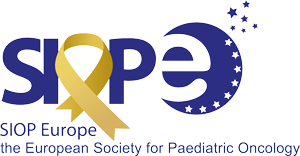PRIMAGE – Predictive In-silico Multiscale Analytics to support cancer personalised diaGnosis and prognosis, Empowered by imaging biomarkers
WHAT?
PRIMAGE is one of the largest and more ambitious European research projects in medical imaging, artificial intelligence and childhood cancer. The project is devoted at developing methods of computational analysis of medical images applied to childhood cancer.
PRIMAGE proposes an open cloud-based platform to support decision making in the clinical management of malignant solid tumours, offering predictive tools to assist diagnosis, prognosis, therapies choice and treatment follow up, based on the use of novel imaging biomarkers, in-silico tumour growth simulation, advanced visualisation of predictions with weighted confidence scores and machine-learning based translation of this knowledge into predictors for the most relevant, disease-specific, Clinical End Points.
The proposed data infrastructures, imaging biomarkers and models for in-silico medicine research will be validated in the application context of two paediatric cancers, Neuroblastoma (the most frequent solid cancer of early childhood) and the Diffuse Intrinsic Pontine Glioma – DIPG (the leading cause of brain tumour-related death in children).
WHO?
PRIMAGE is financed by the European Commission (implementation duration of 4 years) and has 16 European partners that are participating in the consortium. Internationally recognised researchers active in-silico technologies and clinical experts in paediatric cancer are part of PRIMAGE.
The partners: Quibim, Medexprim, Konstanz University, Pisa University, Zaragoza University, Sheffield University, ANSYS France, Valencia University (i3M), Chemotargets, Cyfronet, Bologna University, Matical Innovation, HULAFE, CCRI, UKOELN and SIOP Europe.
WHY?
The expected outcome of the project is to integrate and validate functional prototype of PRIMAGE cloud-based platform offering predictive tools to assist management of Neuroblastoma and DIPG paediatric cancers, from diagnosis to prognosis, therapies choice and treatment follow up, based on the use of novel imaging biomarkers, tumour growth models and advanced visualisation of predictions.
Neuroblastoma is the most common extracranial tumour in children. Every year in Europe, about 35,000 new cases of children and adolescents are diagnosed and 1 in every 300 newborns will develop cancer before reaching 20 years. Additionally, DIPG is a very rare tumour in children having a disastrous survival (10%) despite treatment and research. Unfortunately, there is no curative treatment for DIPG and radiotherapy (standard treatment) is only palliative.
HOW?
SIOP Europe, two Imaging Biobanks and three of the most prominent European Paediatric oncology units are partners in this project, making retrospective clinical data (imaging, clinical, molecular and genetics) registries accessible to PRIMAGE, for training of machine learning algorithms and testing of the in-silico tools´ performance.
Solutions to streamline and secure the data pseudonymisation, extraction, structuring, quality control and storage processes, will be implemented and validated also for use on prospective data, contributing to European shared data infrastructures.
Further information: www.primageproject.eu
Twitter: #PRIMAGEproject
